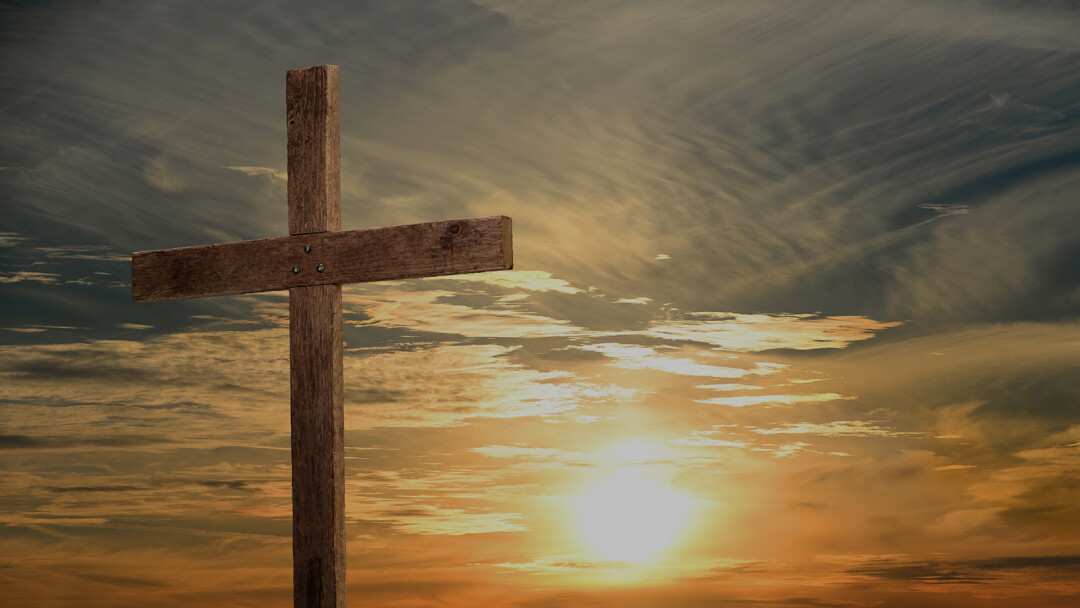The Chains at Her Feet

Michael Chabon wrote a great novel called the Wonder Boys. It is the story of a writer who is reluctant to be honest about love. Wonder Boys is an inner demon tale of how difficult it is to navigate desire and honesty and the way life is not a series of well-timed events where choices are easy. Yet, what I love most is how Chabon tells the story mainly though the trunk or passenger seat of an old car. What he puts in the car is impressive. At one point or another there is a pregnant woman, a dead dog, a tuba, a crossdressing man, and the wedding coat of Marylin Monroe when she married Joe Dimaggio.
Sometimes when I am writing a sermon an alarm goes off in my mind, I call it the Wonder Boy Alarm. The alarm is a warning about the collection of thoughts, the metaphors, anecdotes conversing in my head. They start to resemble the old car in the novel. There is a voice that says, "well, this is getting rather Wonder Boys don't you think." Too many odd things at once.
Preparing for the sermon this week the alarm went off. I found myself with demons and nursing mothers and the statue of liberty, and then there was the last interview of Lyndon Banes Johnson with Walter Cronkite. To round it off there was the Emancipation Proclamation as evidenced in Civil War statuary. The alarm went off.
Perhaps it is a lack of a filter, but I do enjoy this moment. The swirl of seemingly unrelatable images that seem to find a unique harmony. An unexpected medley.
To ensure the basic task is completed before the road gets twisty, let's attend to the lessons of Luke first. There are two. Usually we have one lesson, as one is more than enough for a Sunday. And these two lessons can be seen alone, the losing and gaining of demons and the blessedness of doing what is right. Yet they are really meant to be seen together, read together, lived together.
The first is a rather ominous piece. If you are freed from a demon and you sweep your house clean, there is a chance seven will return to make your life truly miserable. This seems all too dire. Dark. Jesus is having a bad day.
Taken alone the teaching is about fear, the fear we have of freedom and opportunity; it is the danger of making things worse when you are trying to make them better. You can see this fear in the Hippocratic oath: if you seek to heal, first do no harm.
A friend of mine expressed this struggle in a poignant way we all have felt. A dear family friend lost a child to opioid overdose. He was thrity-five. She watched him grow up. Loved him as a son. "I don't know what to say," she lamented. "I mean what do you say? There are no words." "Maybe that's it," she said, "I'll say, 'there are no words.'"
The struggle of my friend is where the lessons talk to each other. She needed to do something, do the right thing, say the right thing, (blessed is the one who hears and does), but she also didn't want to make it worse, to bring more suffering (once the house was swept clean seven more demons came). Who hasn't feared making things worse, adding to the burden of others. Trying to be kind we bring pain. Yet, there is this need to act, to speak, to offer something true.
When our teachings are put together, they do not form a tidy response or a guarantee of success. Do this; say this; be this. There is no magic formula. What Luke does with these is much akin to what Michael Chabon did with the old car and its large trunk. He makes a place where we can consider the desires of life, the need for things to be true and good and beautiful. He makes a place to consider: You can't just refrain from life in fear of making mistakes, it is not enough to simply clean the house, you must also act, risk, wade into the fray.
So with that, let's take a look at what is in the trunk.
The Statue of Liberty was a gift of France offered in the 1870s. The offer required a lot of work to be realized. This was a piece of art known as a colossus. Huge. It would need a place to be constructed, a base for it to sit upon and the funds to pay for all of this. It took time and some negotiations before the colossus found its way to Governor's Island. In the deliberations and preparations there was a snag, a controversial element the American side of the project wanted to change. They didn't like the chains.
The original design of lady liberty is very much what we have today barring one detail. Originally she was to hold a torch in her right hand and broken chains in her left. The torch was truth, hope, light, guidance, welcome even. The chains were to represent the end of slavery, emancipation. Lady liberty was a liberator, breaker of chains: America fought to free the slaves. The colossus was to convey this great achievement of liberty.
Yet, what the French delegation didn't know was that emancipation was not true. There was a proclamation, yes; but slavery simply continued in another form. Slavery was outlawed, but it was alive and well. It just had a new name, Jim Crow.
The compromise they reached was profound. The chains were moved from her hand to her feet. In place of the chains in her left hand she was to hold a book with a date written on its open pages, 1776. In essence the colossus became a celebration of independence and not a celebration of emancipation. 1776 was our declaration of independence; the chains at her feet were to symbolize our breaking free of colonial rule. Our liberation from tyranny. The French, in essence, redesigned the statue to celebrate 1776, not 1863. We said, there is nothing in 1863 to celebrate.
And it is not just lady liberty. From the 1880s until the end of the 1920s, 5000 statues commemorating, memorializing, celebrating the Civil War were created in all the states that fought. Go to any town square from Georgia to Maine and you will likely find a union soldier or a confederate soldier on top of a large column or there will be a symbol of victory or sacrifice or a simple plaque that honors the fallen. 5000 monuments were created from lowly soldiers standing guard to generals riding horses. Of those 5000 there is only one statue that was completed to honor, celebrate, recognize emancipation. One. The statue was cast twice: one for Washington D.C. and one for Boston.
The alteration of lady liberty revealed a truth that was lived out for the next fifty years. We do not speak of emancipation; the Civil War was for the union, for state's rights. 500,000 died to preserve the union, to preserve a cause. There was nothing to remember beyond this. Leave it alone. The hidden chains at the feet of liberty were a mandate. Keep this out of sight. Keep this quiet.
It's hard, though, once you have seen the chains at liberty's feet, it is hard to keep quiet, to ignore them, to look the other way. As if by design they are invisible, out of sight, hidden. Most people are shocked to see them. Had no idea they were there. Yet, once revealed they become the focus, casting a darkness greater than the light cast by the torch.
Walter Cronkite traveled to Texas to interview Lyndon Banes Johnson in 1973. He had no idea he would be the last person to record his voice. Johnson died a few days after they spoke.
Cronkite came to Texas to interview the former president because there was a controversy when LBJ opened his presidential library. What Johnson said in the opening of the library was shocking.
When asked about his decades of political service beginning in state legislature, then congress, then the senate, the vice presidency, and ultimately the presidency, what Johnson claimed as his most important acts, his greatest accomplishments, he mentioned three. The Civil Rights Act of 1957 which he led through the senate, the Civil rights act of 1964 which he brought about shortly after the death of President Kennedy, and then, finally, the voting rights act of 1965. Johnson said, these are the most important things I did.
Cronkite traveled to Texas to understand this, to see why Johnson said this, made the claim: civil rights was the most important issue of his long career.
His response to Cronkite's question was simple, I don't know. But it is. Cronkite had a guess of when this began. He brought a simple statement Johnson made in a famous speech when he was president. Speaking of equal rights, Johnson claimed, freedom is not enough. Freedom is not enough. You can't tell someone they are free if they have no real opportunity to be equal; you can't "open the gate of opportunity" if people have no chance of taking it. You can't tell people they are free to vote if you do everything in your power to keep them from voting. Freedom is not enough.
Deep into the interview I was stunned. As if Cronkite was missing the point, Johnson said, look, the Emancipation Proclamation was just a proclamation; it was not a fact. And then he said, we did nothing to change this for a century but now we are. Johnson conceded that these changes may go too far, may be too fast, but, he said, this is so long overdue. Freedom, liberty is not enough. And a century is too long to wait for change.
Although the Statue of Liberty was not mentioned in the interview, what I believe Johnson was trying to say, what Cronkite was trying to uncover, was this: when was the moment you saw the chains at the feet of the statue? How did he come to see this? I like Johnson's response. I don't know. But once you have seen them it changes everything.
In Johnson's statement, freedom is not enough, is the truth Jesus offers with the house swept clean and the one demon replaced with seven. What he came to see and spoke of in the interview was what Jesus offered in response. It is not enough to be free of the demon; you must also do the good, make the right, make something of freedom. If you don't act, if you don't make something of freedom, you are faced with ruin. That was one of the last things Johnson said. We have kept this awful truth hidden (the emancipation proclamation was just a proclamation; it was not a fact), we have kept this buried for so long and it is ruining us. Freedom is not enough if there is no real equality, no equity.
In the aftermath of the Civil War, in the brokenness of reconstruction, it was if all parties in power agreed to silence. In order to get back to work, to make America a nation again, it was as if a bargain was reached to not speak of emancipation. States' rights or the union. That was the contest. Place the chains, not in her hands, but at her feet. We cannot celebrate 1863, but we can celebrate 1776.
But once you've seen this, once you see the chains at her feet, can you go back? Can you "unring the bell?" It is not enough to claim freedom, we must build it, make it good. It is not enough to clean the house. Freedom is not enough. You must act, strive, create the good for all. Amen.

Rev. Dr. Fred G. Garry
Senior Pastor & Head of Staff
Sermon Notes
You can add your own personal sermon notes along the way. When you're finished, you'll be able to email or download your notes.
